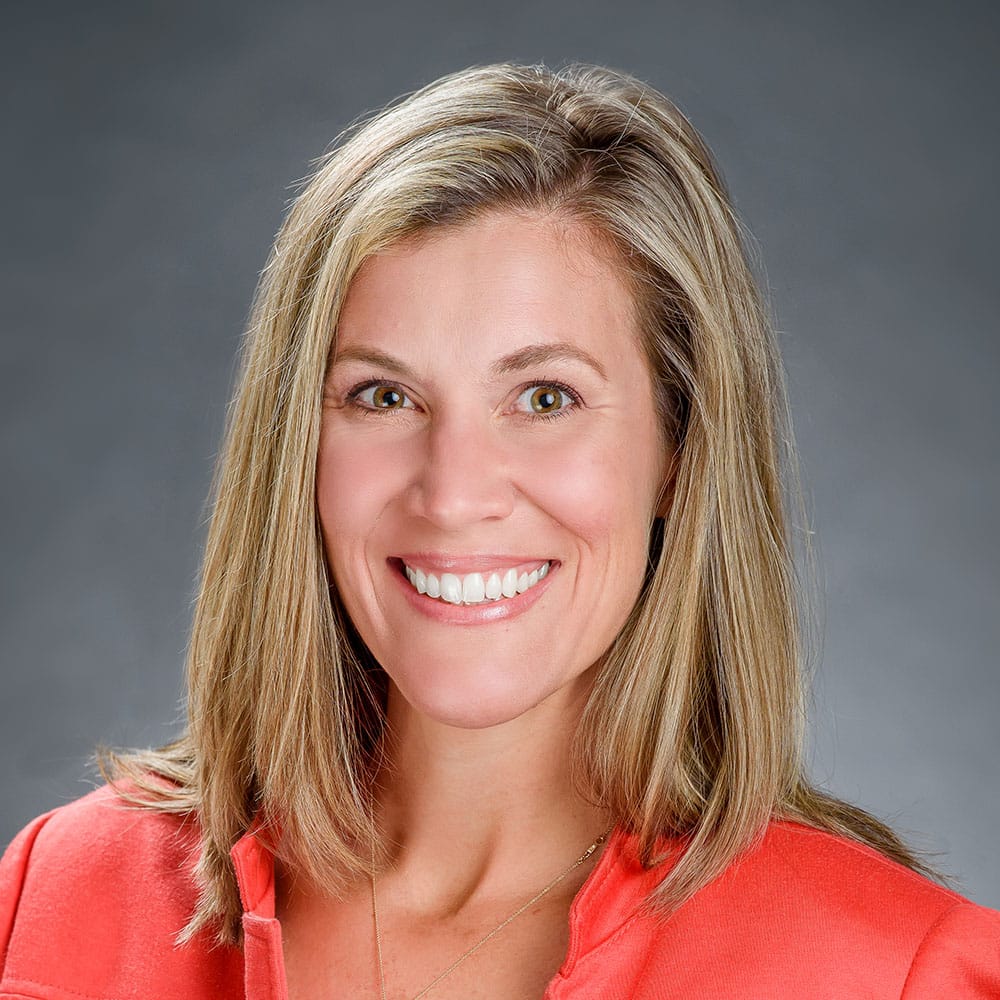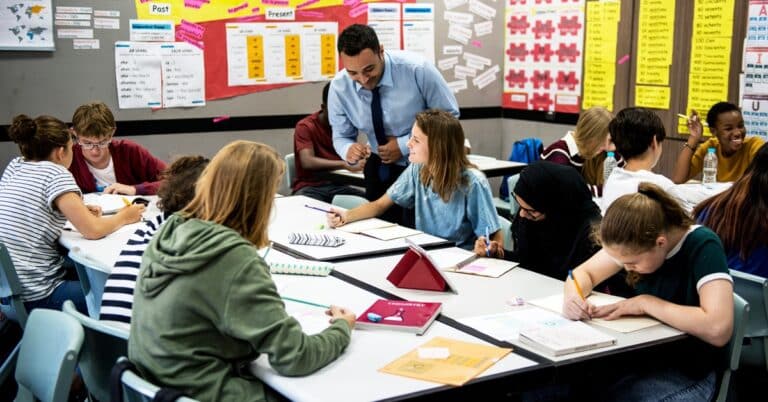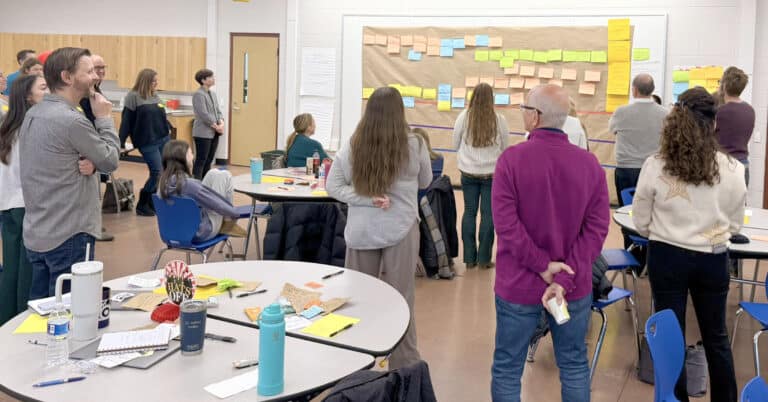Redefining success in education will require a coordinated effort between educators, administrators, policymakers and the community.
This is one of many topics KnowledgeWorks CEO Bill Hite, EdD, discussed with Jean-Claude Brizard of Digital Promise and Julie Murgel with the Montana Office of Public Instruction as part of a virtual event series hosted by New Classrooms and Transcend Education in conjunction with the release of the report Out of the Box.
The focus of their conversation was systems transformation and the role and responsibilities of school and district leaders in rethinking teaching and learning. During the discussion Hite recognized that while state and district leaders must be at the forefront of systemic change, the burden of designing these new approaches to education cannot fall solely on the backs of educators.
“It has always been incumbent upon the [school] system to come up with the solutions. But as we think about those things that have been most successful, there is a lot of work that has been done outside of the system that aligns with what we want to see,” Hite said. “Whether that’s businesses providing internship or an after-school program or out-of-school time opportunities, there are multiple places for young people to engage in the type of learner-centered experiences that we want. But we have to coordinate.”
Hite also notes that while accelerating personalized, competency-based learning will require initiative within local schools and communities, it will also require flexibility at the state level, where policies must create space for innovative learning models to thrive.
“We’ve found the enemy and the enemy is us – our policies and our practices. In my experience the most successful models of innovation were those that were able to operate outside of state policy – things like seat time requirements, assessments and credits.”
How can innovative learning models transform K-12 education? Read Out of the Box. Read more »
Reflecting on his experience as the former Superintendent of Schools for the School District of Philadelphia, the eighth largest school district in the country, Hite highlighted how his district would attempt innovation only to be forced back into the industrial paradigm by the existing structures and systems.
“As we do this work moving forward, we must think about how the system is structured and work to create the conditions for a learner-centered approach to occur. How does a learner-centered approach take root and take hold. What needs to exist?”
Implementing personalized, competency-based learning at the district level often begins by helping communities to develop their own vision for what every learner in their community needs in order succeed, according to Hite.
“It starts with a community-based Profile of a Graduate, or Profile of Learner, that is based upon the outcomes and needs that are inherently unique to individual communities. It can’t be so narrow. It must also include a set of standards that we want to see all children achieve.”
In their current structure, schools are designed to provide instruction organized around a uniform sequence of material delivered to cohorts of same-aged learners who progress on fixed time intervals rather than mastery of content. And we have practiced this same model for the better part of a couple hundred years. How do we change the inertia?
“Using organizational efficiency to scale certain strategies and actions works counter to creating a learner-centered approached,” Hite said. “We have this model we are using simply because of its efficiency, not its efficacy.”
Stakeholder mindsets and power dynamics have largely prevented the changes needed for systems level transformation. For many, the prospect seems inherently risky and laborious particularly given the current capacity and human resource constraints schools and districts are facing.
Better aligning accountability and preparing our teachers to deliver personalized content is how we begin the transition and shift the role of an educator to one that is more rewarding for the teacher and learner.
“The work that we are asking teachers to do means rethinking the teacher development model. We are asking them to do this work and to be innovative, but we aren’t giving them the tools or the pathways to do it successfully.”
Recognizing the system that we have was not inherently designed to do deliver personalized learning, Hite discussed the role KnowledgeWorks plays in revisiting core design assumptions and providing recommendations for how schools, districts and states begin to realize a new learning approach.
“At KnowledgeWorks we are working at more of a systemic level with partners. Understanding that if done well we can create the conditions that allow for learner-centered agency,” Hite said. “If we are truly thinking about every learner, we need to think about all aspects of our systems differently — time differently, assessments differently. We need to think differently about where learning occurs.”
A personalized, competency-based approach to learning reimagines our K-12 education systems with the goal of ensuring that each child is empowered with the knowledge and skills they need for the future.





